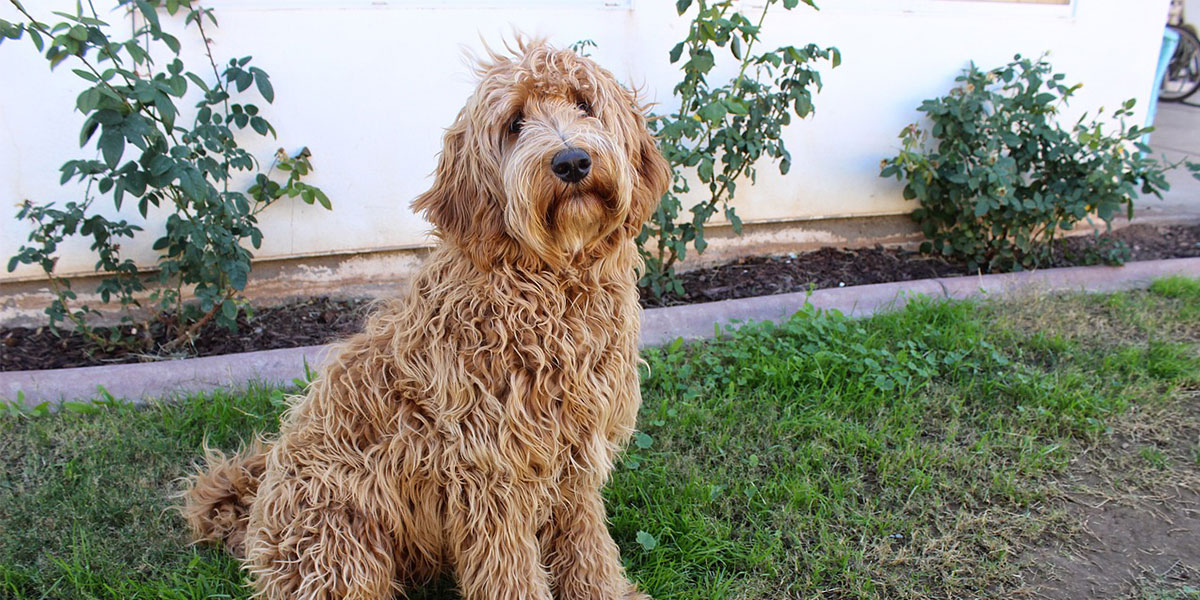Taking too long? Close loading screen.

February 26th
It can be tough to leave your Labradoodle alone for the first time.
Your pup may start yelping, scratching, and jumping as soon as you leave the room. You may be tempted to rush back in and promise that you’ll never leave again.
But it is important that every Labradoodle learns how to live alone, at least for short periods. Dogs are highly social animals, so they will almost always prefer the company of other dogs and people over solitude. But that doesn’t mean that they can’t learn to at least tolerate the time when you aren’t around.
This can be a tough step for many dog owners to take, especially with a puppy. As soon as you leave, your puppy may begin to howl and cry, scratching at the door of the crate. Unfortunately, this is part of the process.It will be hard at first, but your puppy will soon begin to adjust to being alone for short periods of time.
At first, your Labradoodle may not think you are coming back, leading to anxiety. But your puppy will see that you always return. This will make them calmer, and help them tolerate being alone. As they get more comfortable, you can increase the amount of time they spend in the crate or playroom.
And as your dog ages, you may be able to move them out of the crate and give them freer reign of your house or apartment. This will help with their anxiety, as they won’t feel caged in.
Make sure that your Labradoodle can be trusted before you take this step. It can take time before your pup is ready to roam your house, and their may be some trial and error. But it’s a great way of leaving your dog alone for longer periods without added stress from being in a small space.
Being alone can be nerve wracking for even the calmest pup. That’s why you should try to make it as enjoyable for them as possible. What does your pup enjoy almost as much as your company? Their favorite food.
By associating alone time with meal time, your pup will begin to see that being by yourself really isn’t that scary after all. This strategy works best if used at fairly consistent times, as you want your dog to think of alone time as part of a routine.
When your Labradoodle is young, they may have more energy than they know what to do with. Playtime is a great way of blowing off some extra steam and getting your pup exercise, keeping them healthy.
You can also use your dog’s playtime as an exercise to calm them down. Get your pup excited, and then midway through play, have them sit down calmly. This is going to be tough at first, as your Labradoodle will be more worked up than a caffeinated toddler. Try to make them sit for just a few seconds at first, and slowly work your way up to longer periods of calm sitting.
Eventually, your pup will begin to associate down time with play later on. As you do this exercise, you can slowly increase the amount of time where you have your dog rest.
What does this have to do with a dog being alone? By learning that play follows down time, your dog may be more relaxed when they go into the crate or playroom. They’ll also more easily be able to transition from running around to lying down calmly, which will make easier to get them in the crate.
Following all of these steps might be just as hard for you as it is for your Labradoodle. And it’s not just the puppy that needs to learn to be alone. Training is difficult, and many dog owners have to understand that pawing, crying, and are normal behaviors.
Always remember that dog training is just as much about what you learn as what your pup does. If you give in and let your puppy out of the crate after the first cry, they’ll never get used to being alone.
Most pups will adjust over time to being left alone, although it may take a lot of hard work. However, there are some cases where a dog is showing signs of severe separation anxiety.
If your Labradoodle is showing any of these signs, they may have a severe case of separation anxiety. You may need the help of a trainer to give you more structured exercises to help your dog deal with anxiety.
And if you don’t yet have the perfect Labradoodle pup, head over to our puppy finder page to find the dog of your dreams.
Find the Perfect Puppy